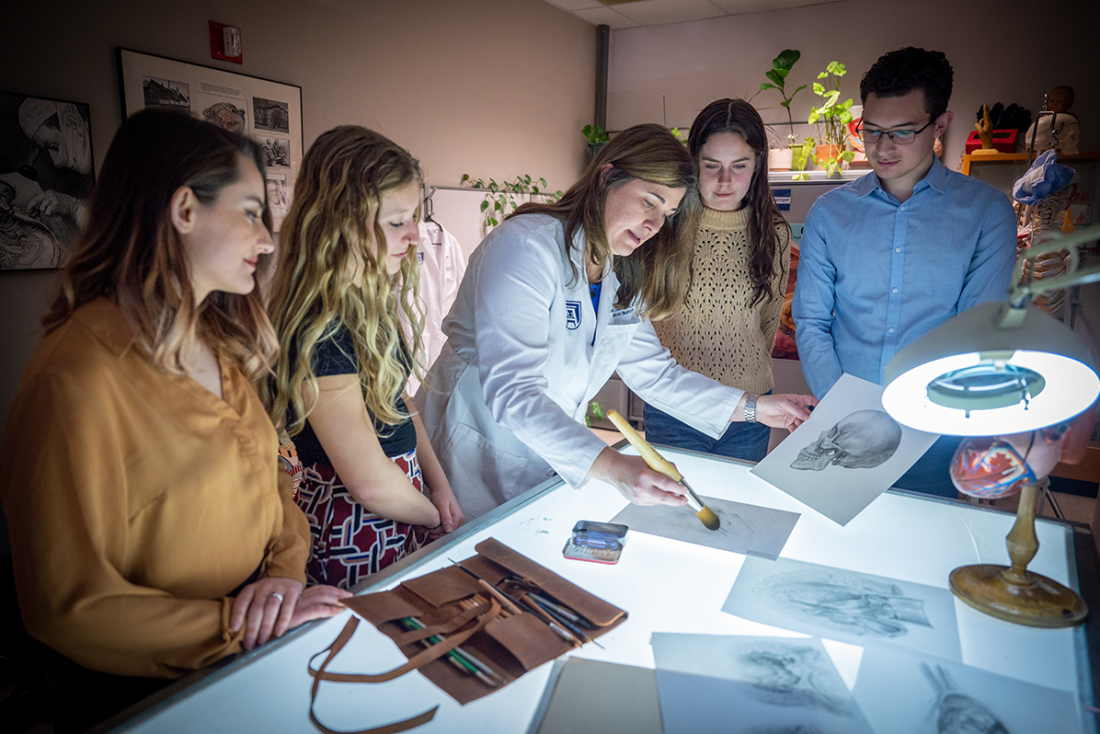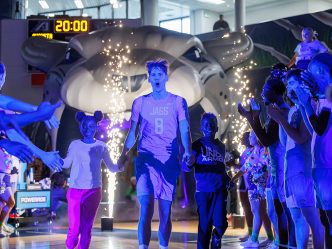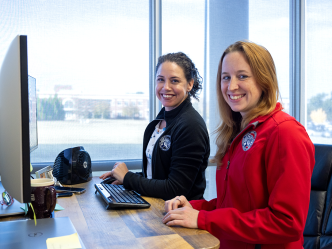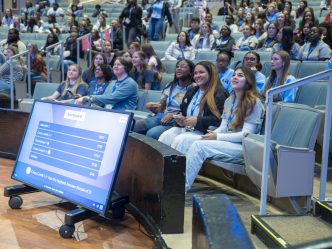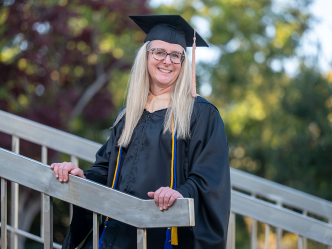Amanda Behr, chair and associate professor of Augusta University’s Department of Medical Illustration in the College of Allied Health Sciences and The Graduate School, has a term she uses when describing medical illustrators: artistic scientists.
“We are the communicators of science by creating those visuals, so we truly have to understand the science,” Behr said. “The amount of science knowledge that medical illustrators need to be able to intake really sets them up to be partners in scientific discovery.
“Part of what we do in the program here is prepare students to be lifelong learners, because there is always going to be new technology and new scientific discoveries. What I love about this job and being a medical illustrator is every day you learn something new. You can’t know it all, but it’s important that you have the foundation, the ability to learn quickly and take it all in and have that base knowledge to be able to have conversations with scientists, surgeons and public health professionals.”
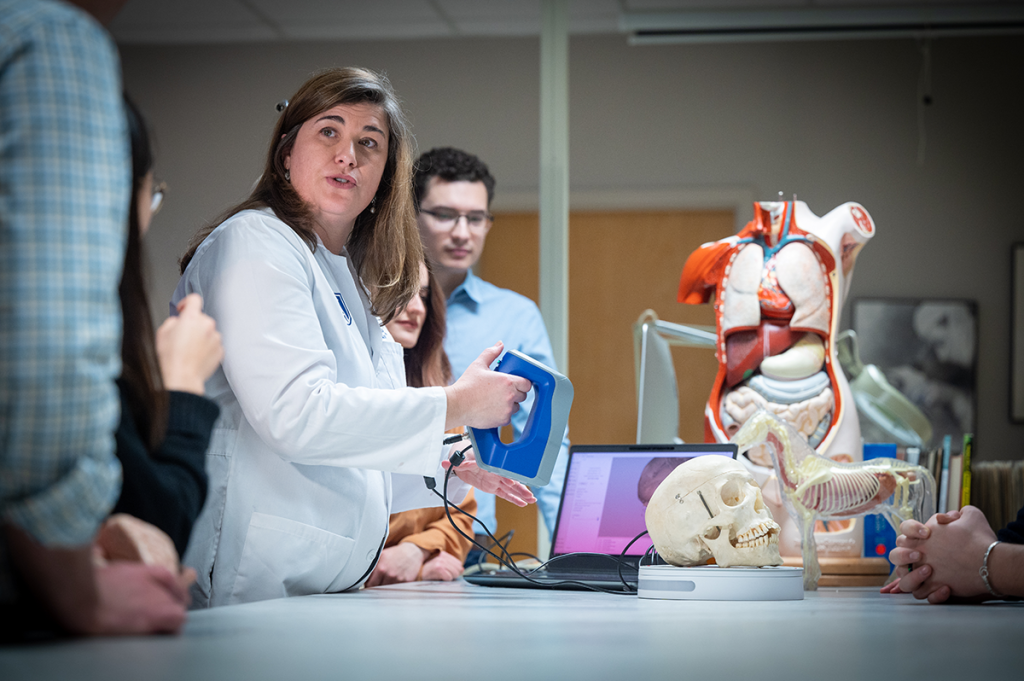
In other words, medical illustrators not only have to be talented artists, but they also have to possess a wide and technical understanding and appreciation for the science behind what they are drawing.
Lynsey Steinberg, director of innovation at the Georgia Cyber Innovation and Training Center, said the medical illustration industry’s diversity leads to even more creativity.
“There’s a book called Range: Why Generalists Triumph in a Specialized World by David Epstein, and he talks about how we’ve become a world of overspecialization,” said Steinberg, a professional certified medical illustrator who formerly served as assistant professor of medical illustration and innovation specialist at the Center for Instructional Innovation at AU. “What I find fascinating is that in this book, he has done all of this research, and they have found that people with the most diverse range of experiences in their pathway have become the most creative and the most innovative. And I think that is what you find in medical illustration. This wide variety and diverse experiences are what make us such great problem solvers. I feel we thrive in the industry because of that diversity.”
In an effort to contribute to a broader base of understanding for the first-year graduate students within the Master of Science in Medical Illustration, Behr and Steinberg reached out to Phinizy Swamp Nature Center and Center for Water Sciences to see if they could help with any projects.
It was an opportunity for everyone to benefit and it featured deep ties through both the Augusta community at large and the AU alumni network.
Breaking through misconceptions
When the students first heard about the project, the general consensus of the group could be summed up by Joseph Pulsoni’s initial response, “Why are we going to Phinizy?”
Prior to the project, Pulsoni, a non-traditional graduate student from San Francisco, thought of Phinizy the same way many probably do: just a swamp.
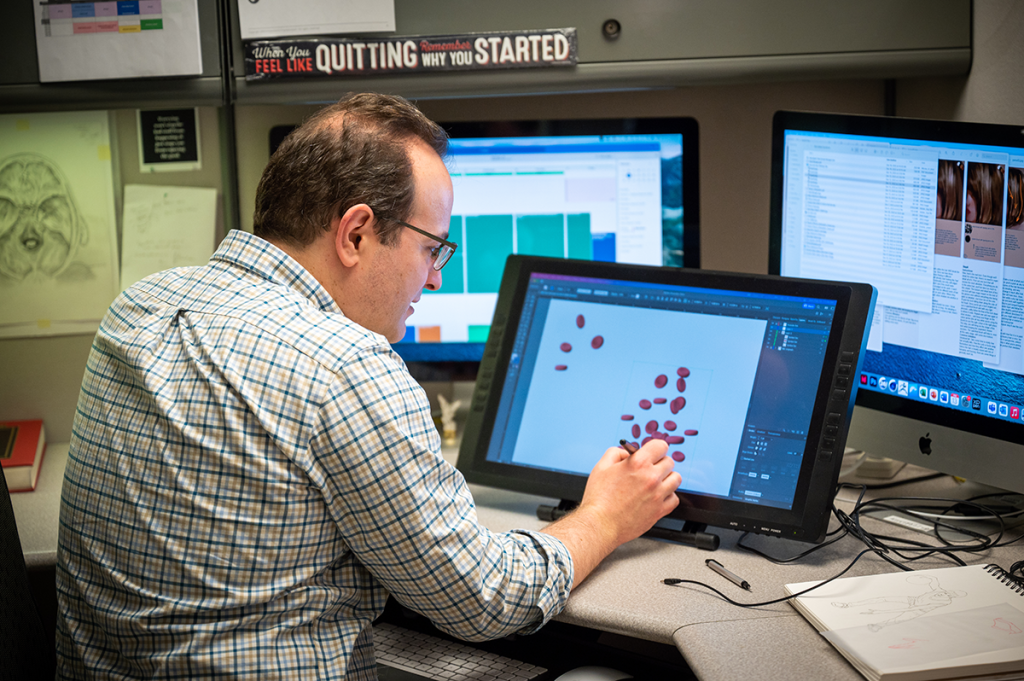
“I just thought it was a place where water goes for a while and then it goes back out into the environment, and they have some cool alligators and birds. I didn’t know about all the work going on in the background and the research they were doing. That was really impressive,” Pulsoni said.
Once the misconception of Phinizy was broken, excitement began to build among the students at the thought of having an impact on the Augusta community and beyond.
“I was very excited about this project because the idea that families or anyone can walk through the park and connect with it once these are installed, that was really cool to me,” said Mia Nickell, a first-year student from Suwanee, Georgia. “Hopefully people of any age can come through and be really excited about being in nature. Especially when you’re little, that can spark inspiration for younger kids.”
Since both Phinizy Swamp and medical illustrators battle misconceptions — Phinizy is more than a wetland, and medical illustrators, sometimes referred to as scientific illustrators, don’t just draw the human anatomy — the partnership proved to be a perfect opportunity for both sides as the students learned about and illustrated everything from blue baby syndrome to salamanders to belted kingfishers and more.
One project from the partnership on the pied-billed grebe designed by Alicia Berry won an award of excellence at the UGA/AU Scientific and Medical Illustration Exhibit in February.
“It was really a partnership,” said Callie Oldfield, PhD, research director at Phinizy Center for Water Sciences.
Oldfield went on to share how the researchers and staff at Phinizy curated a list of topics they needed to have illustrated. Some were already featured on older kiosks and posters that had seen better years, some were outdated and others had never been added before. The students were able to pick and choose what topic interested them from that list.
“We started by brainstorming common topics that would be helpful for us to explain topics to students, interns and anybody who visits the park — like certain animal adaptations or different concepts relating to water chemistry — and then we presented that list to the group, they chose what they were most interested in and then designed their illustrations based on that.”
Learning to work with a client
There’s a saying that goes, “art is in the eye of the beholder,” but that’s not the case when it comes to medical or scientific illustration. The artwork needs to be accurate, and it needs to meet the needs of the audience.
The partnership with Phinizy was a unique endeavor because first-year students in a program of this magnitude are rarely turned loose with a client in their first semester. But that is the route Behr and Steinberg took.
Because of this, the students had to learn to accept constructive criticism about their work to ensure it meets the needs of Phinizy and the community at large.
“I believe that the more hands-on, experiential learning experiences that students have before they graduate, the better prepared they will be when they enter into the industry. If that means more projects earlier in their studies with clients who understand they are working with our graduate-level students for the purpose of health sciences education, it’s a win-win situation for everyone. Who doesn’t win through collaboration for problem-solving in our community? Communication, inclusivity, interdisciplinary collaboration are all things that will help us all thrive,” Steinberg said.
The students were given access to researchers, scientists and staff at Phinizy to learn more about their chosen subjects and get valuable insight into the science behind their chosen topic.
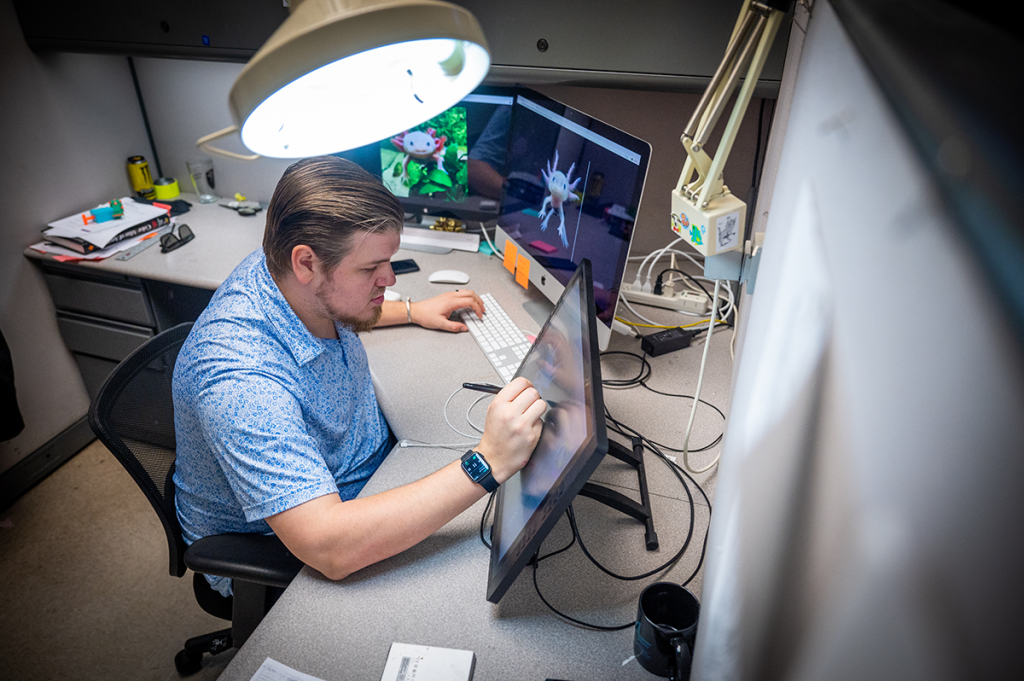
“The amount of information you have to be able to take in and process for a project like this — I know so much more about salamanders now than I ever thought I would, down to the histology that I’ve never even looked at before,” said Samuel Strecker, a student from St. Louis. “But you look at it and you get this information and you go, ‘OK, how can I convey this with a picture?’ because that’s the ultimate goal. You want the picture to draw them in to read and learn more.”
Phinizy Swamp and Nature Center’s focus is centered around studying the natural sciences and it benefits many as an educational center, but it also provides water purification before the water reenters the ecosystem in the Savannah River.
“One of the great things about this project at Phinizy, they were able to go and speak to the scientists, but they also had specimens that the students could observe. They could look through microscopes, there were feather specimens, there were preserved specimens that they were able to interact with and better understand how natural science worked related to the scientific process. It was great that the students were able to go into the lab and explore and really speak to the experts and translate that into an educational resource for our local Augusta community,” Behr said.
Working big while staying small
Traditionally, the best place to see the work of a medical illustrator is to open a textbook dedicated to one of the sciences. Because of the limitations of space in a book or even an informational poster, medical illustrators are working in small, confined spaces.
“Before this project, we hadn’t done a piece so large. Some of these are 30 inches wide for the kiosks that are in the environment at Phinizy. So, I was a little worried that going that large would be a stretch because working large is such a unique skill.”
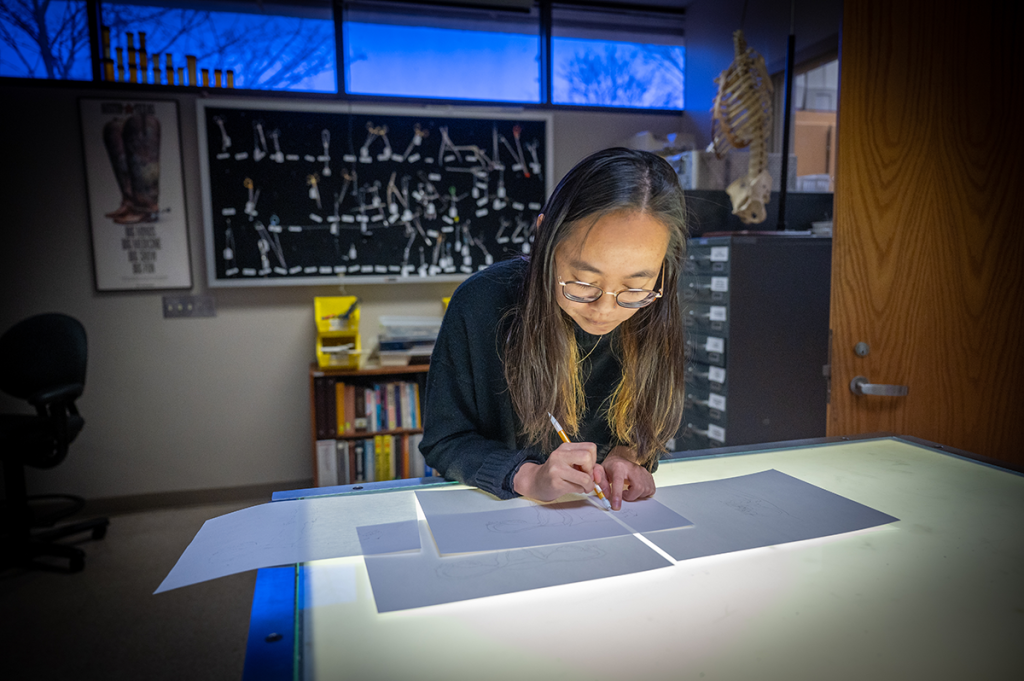
For the project with Phinizy, the constraints as far as borders were still there, but now they had to learn to work on much bigger scopes. Instead of just working on the visual components, students needed to make sure they included text and had terms and explanations that worked on a third-grade reading level.
“It was difficult for me in some ways because up until this point being a fine artist, I very rarely dealt with adding text and images together on one thing, so the hardest thing was just fitting all the text that I wanted to have supplement my images into the areas that I had designated for those images,” Strecker said.
Despite the initial concerns, the students worked hard, oftentimes finding spaces around the medical illustration department to draw on whiteboards the dimensions that they would be working in.
“For me, I believe it was the initial stages of laying out the flow, design flow. Sometimes I struggle a little bit with coming up with multiple designs, but I think that is a very important step, and I’ve had that taught to me to take the time to make several different layouts and have someone look at that through that process and give you feedback,” said Nickell.
Examples of the students’ work
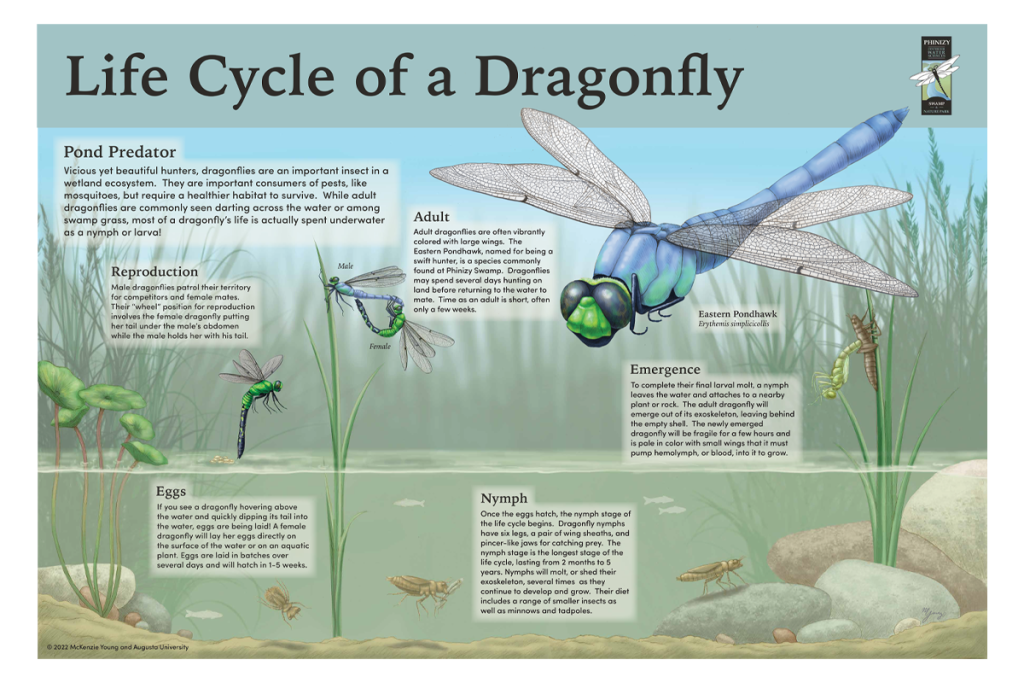
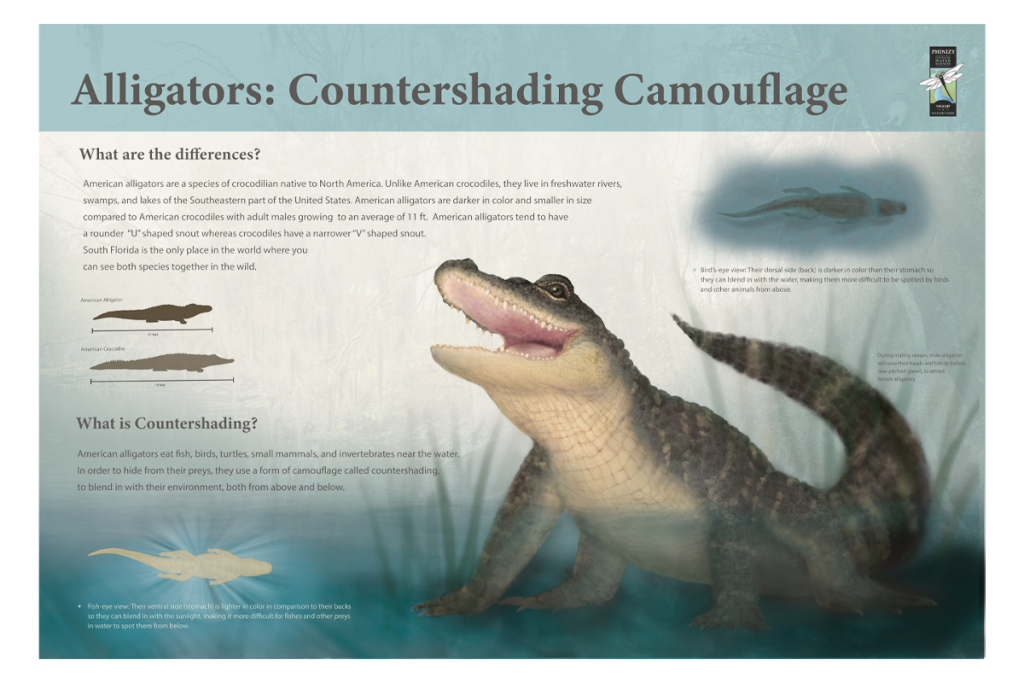
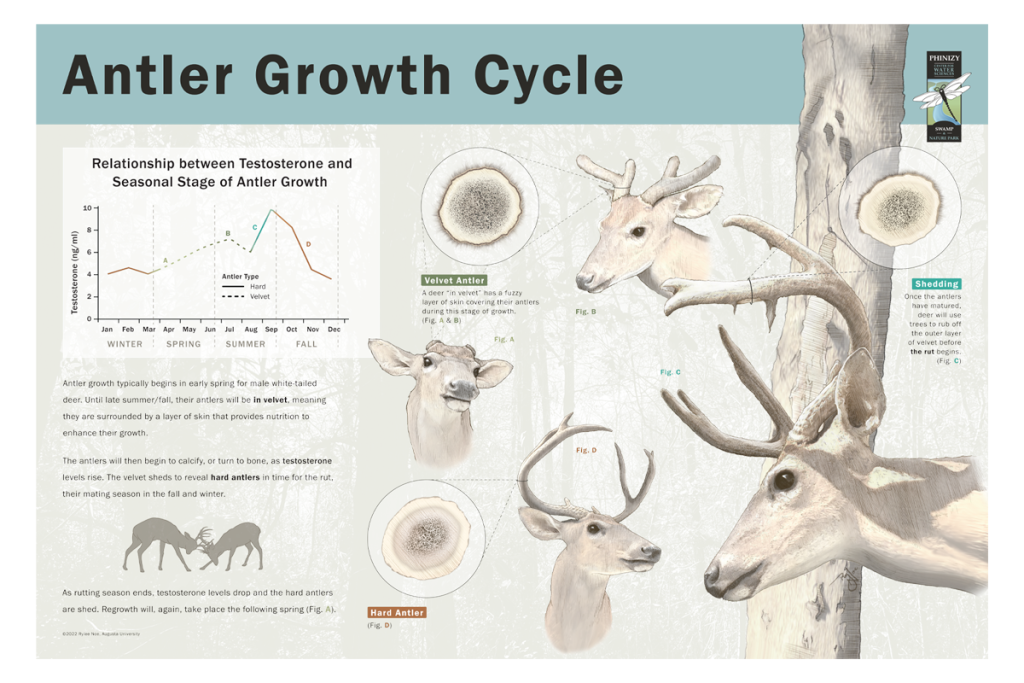
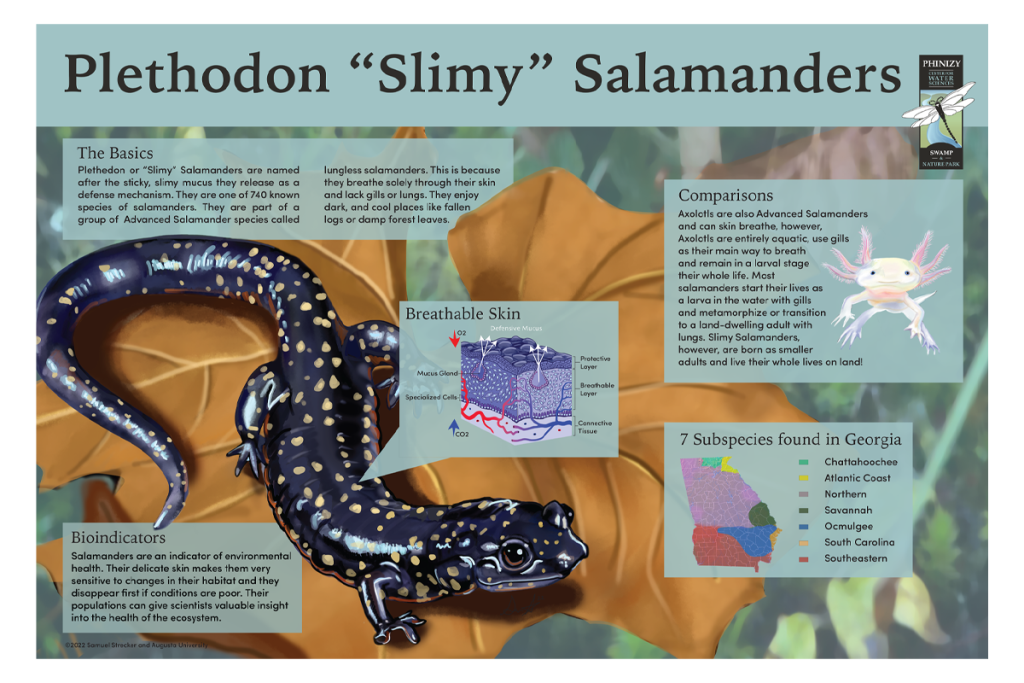
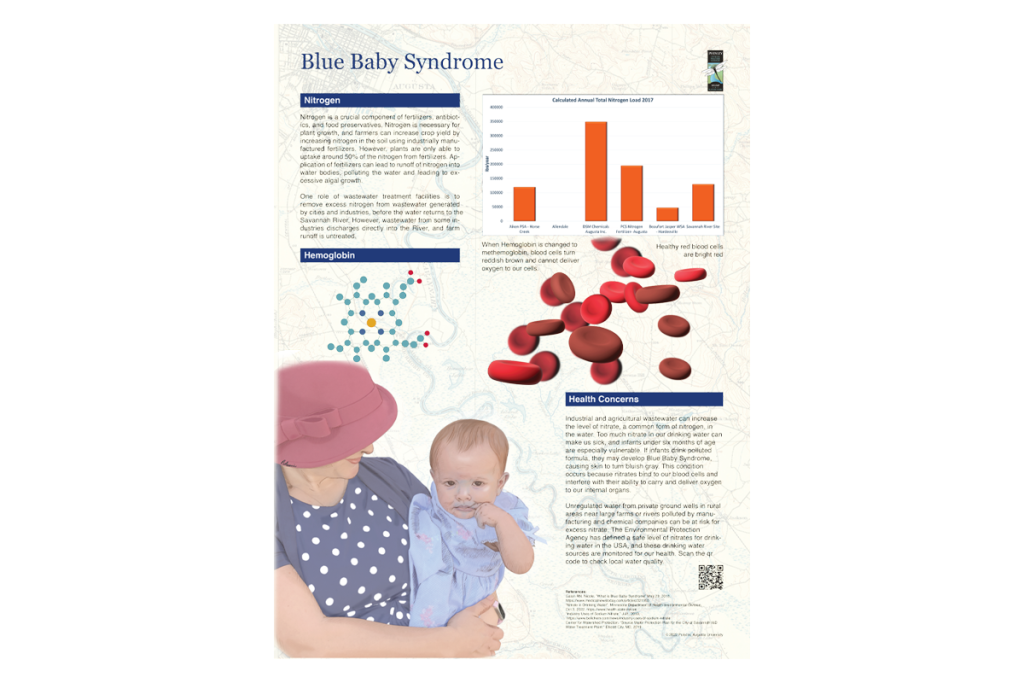
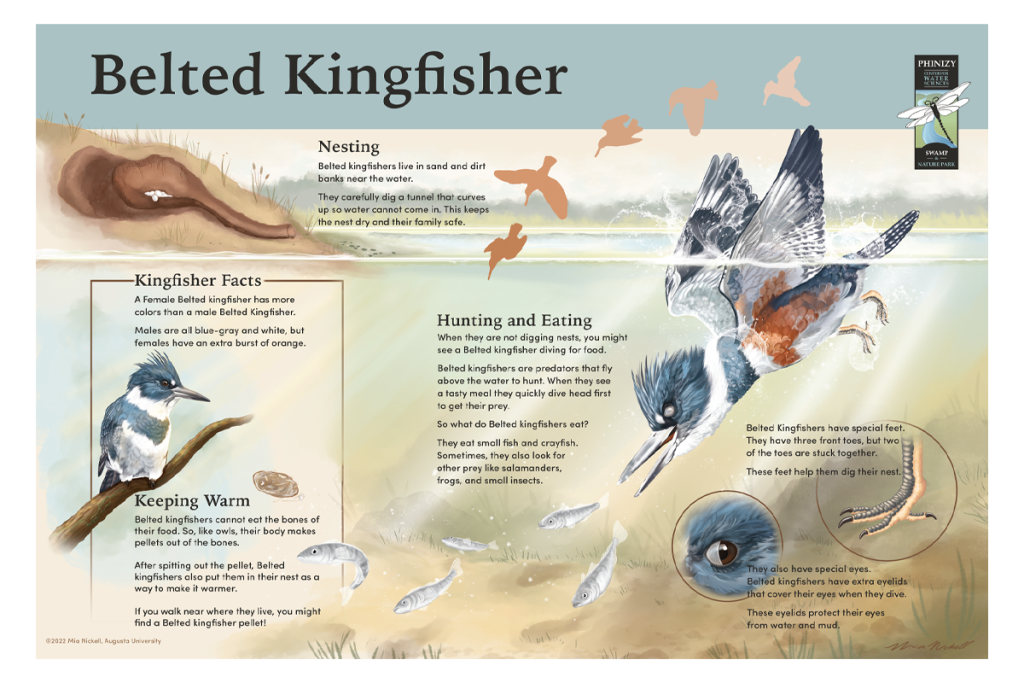
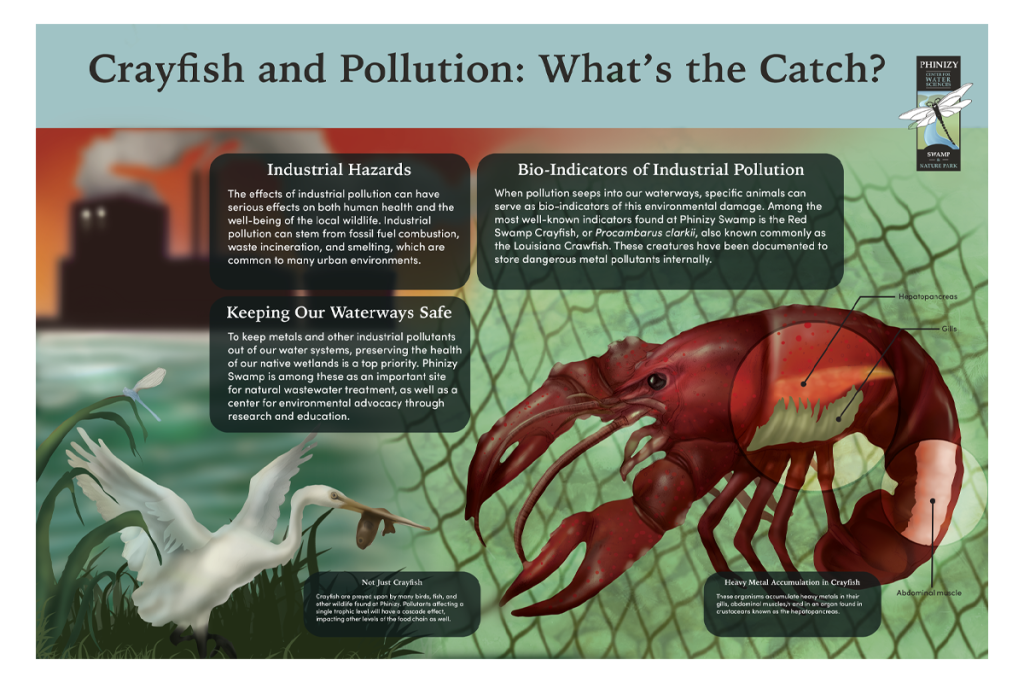
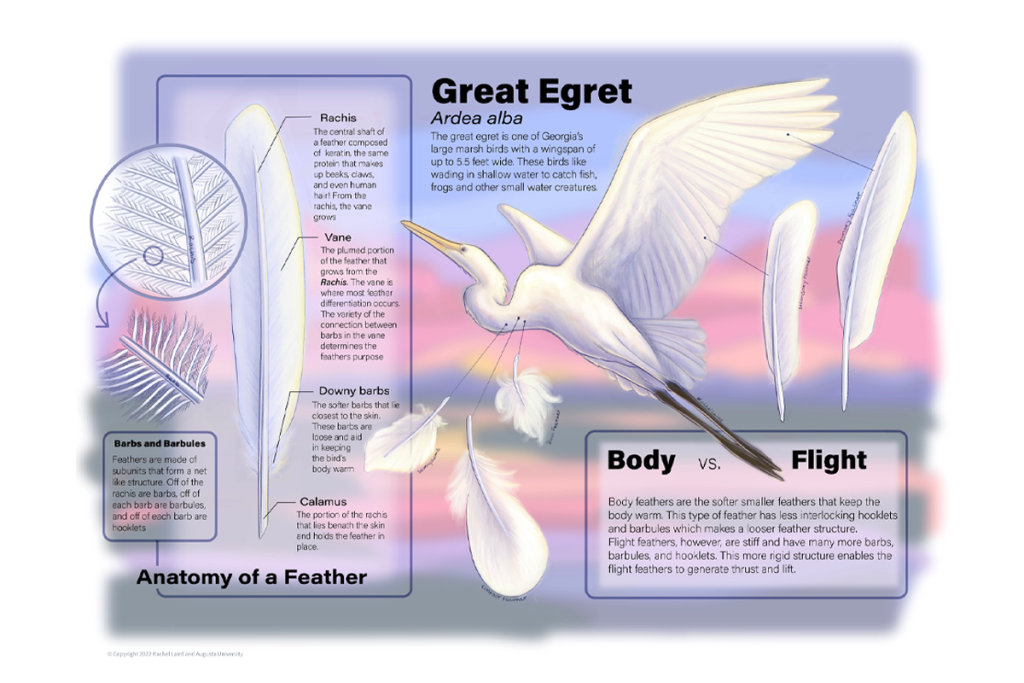
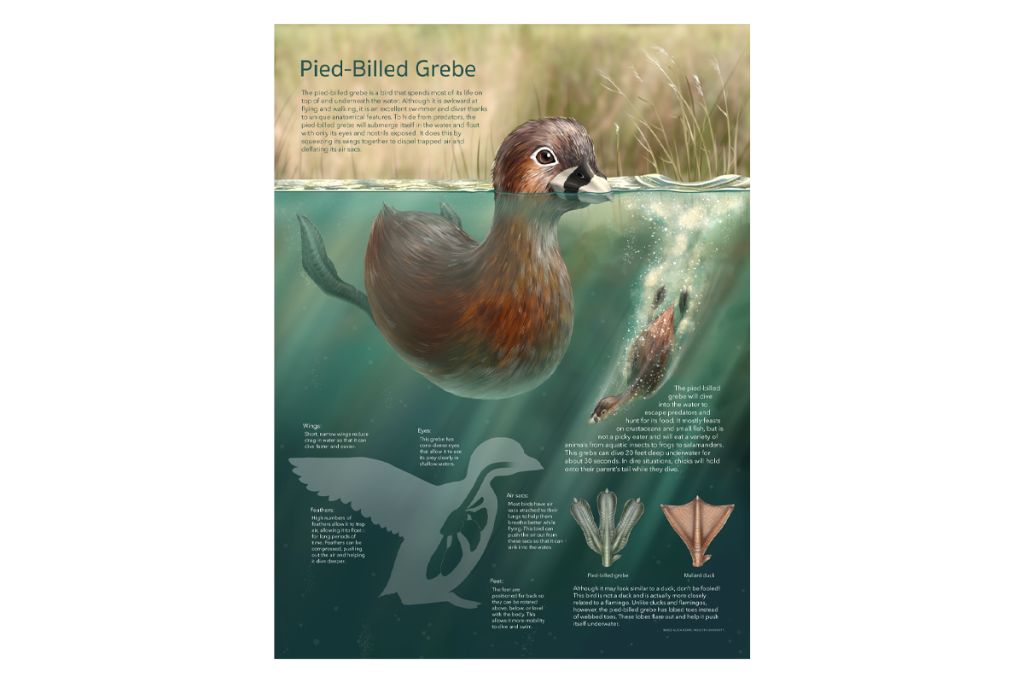
A natural connection
Phinizy is known as a place for people to go and learn about natural science, but there is another natural connection as well. Phinizy employs three Augusta University alumni, and numerous alumni, faculty, staff and current students also volunteer countless hours at the center.
Included in the alumni on staff are Alicia M. Sweat, executive director and chief operating officer, a graduate of James M. Hull College of Business; Jillian Amurao, a lab supervisor and research scientist who holds a bachelor’s degree in chemistry from the College of Science and Mathematics at AU and was a lab teaching assistant; and Jacob Lott, a research technician who earned a bachelor’s degree in business management from Hull.
“It’s really an incredible partnership filled with incredible opportunities. To have a nature park so close to a downtown area, to be able to go to a swamp just 15 minutes away from downtown is amazing, and we really do appreciate all of the AU students who volunteer here,” Oldfield said. “We have classes that come out all the time that tour and learn about the ecology, and they go to the wastewater treatment plant and get an educational tour through Phinizy. It’s so important to be able to connect with the students and be able to actively educate them about the environment, especially the wetlands.”
The next steps
Now that the final projects have been turned in and edited, the only thing standing between the kiosks and posters being created and installed in their new homes is money, according to Oldfield.
Phinizy Swamp is looking for funding to place the students’ work as either replacements or all new pieces.
“We would love to find someone who could fund creating the kiosks that use the AU students’ designs,” Oldfield said. “We have kiosks around the park describing scientific concepts and teaching visitors about wetlands and some of the native animals. A lot of the students in this class designed kiosks that can be swapped out at those locations, so we would really love someone who wants to partner with us to introduce these kiosks to the park.”
For more information on how to support this project, email or call the Phinizy Swamp Nature Center at 706-828-2109.
 Augusta University
Augusta University
